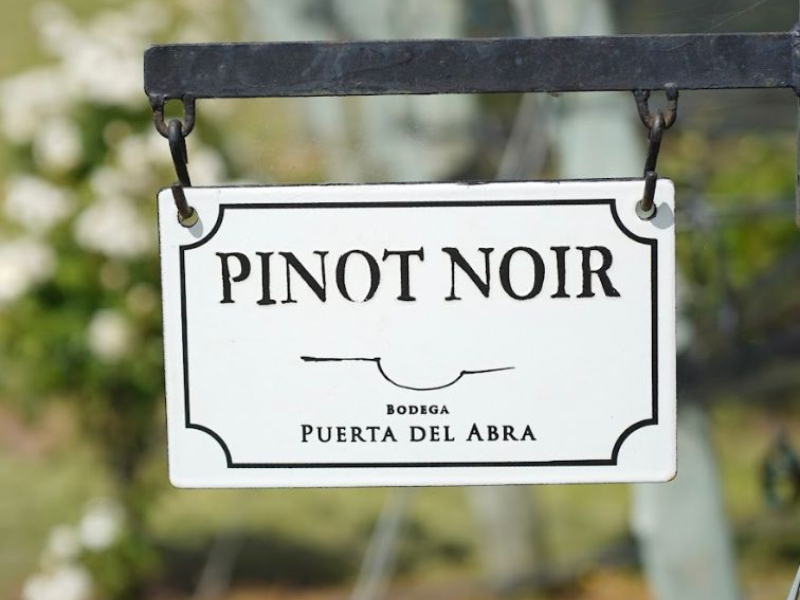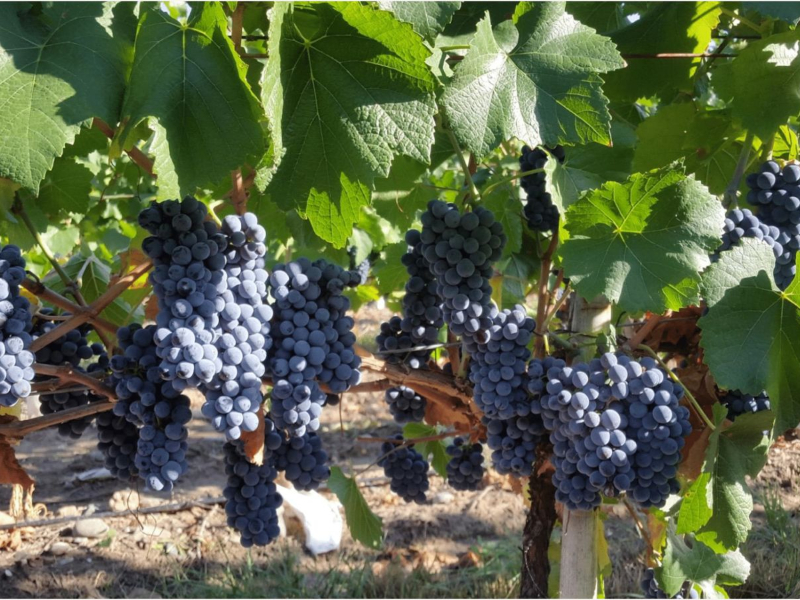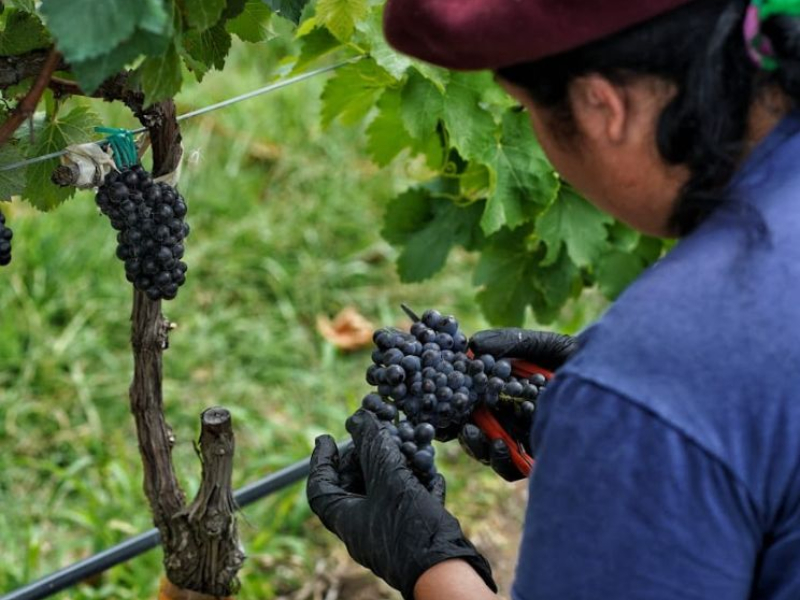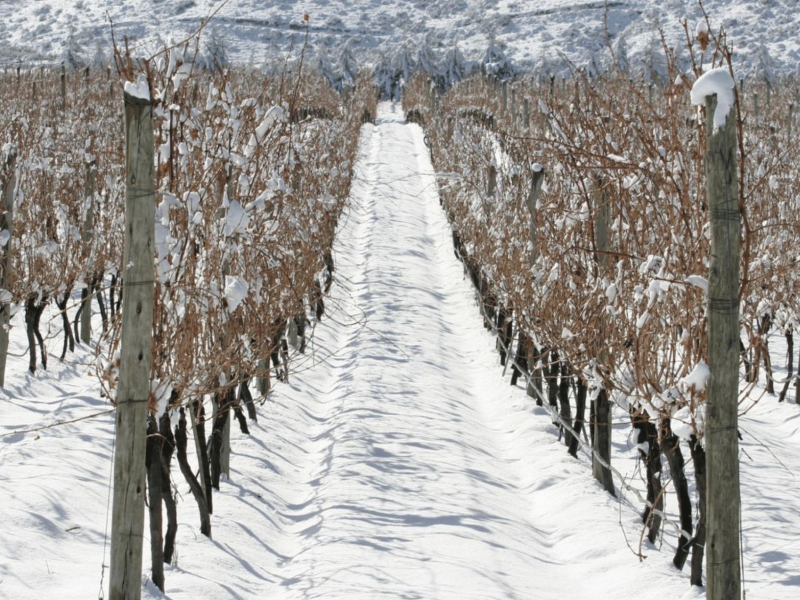On August 18, the world celebrates Pinot Noir Day. The grape is one of the most popular across the world and the wines it produces tend to offer aromas of red fruit such as raspberry and cherry and earthy notes such as truffle and mushroom along with a light to medium body, a velvety texture and tart acidity. A difficult grape to grow successfully, Pinot Noir needs cool climates to ripen – it has a short cycle – meaning that cold areas are favored for it, ideally close to water; a river or the sea.
In Argentina, Pinot Noir was for years a popular grape for sparkling wines but over the past three decades it has earned ground as a variety for mellower reds. Since 2002, the number of hectares under vine with Pinot Noir has doubled to 2000 spread between Salta, Chubut, the Andes and the Atlantic Coast.
What do experts think about a grape that in Argentina, the land of Malbec, is continuing to grow and gain ground? We talked to winemakers, producers and sommeliers to find out:
Pinot Noir Day: the situation in Argentina

Leo Puppato at Bodega Familia Schroeder – San Patricio del Chañar, Neuquén – believes that the development of Pinot Noir started to strengthen about 20 years ago and Patagonia had a lot to do with that as it is one of the regions best suited to the grape. This growth, he says, “has been remarkable and will continue. We are planning to plant ten more hectares a year for the next five years. But Pinot Noir is scarce, demand exceeds supply and most of the wineries usually run out. Although it’s a temperamental variety and difficult to make well, it’s very versatile and can be used for both sparkling and still wines.”
Juliana del Aguila, the Director of Bodega del Fin del Mundo in the same region, offers further reasons for growth: climate change, which is creating more suitable terroirs, and the increasing popularity of Pinot Noir across the world.
Roy Urvieta at Domaine Nico – Uco Valley, Mendoza – says that there are several factors involved in the growth. “For one thing, Argentine viticulture has invested a lot in understanding and exploring its terroirs, studying how best to make wine and interpret the different regions. At the Catena Institute we have been doing research for decades, which convinced Laura Catena to found Domaine Nico. Another factor is the growth in consumption, which is driving expansion. Now there’s no doubt that in Argentina the terroir exists both on a scientific level and in terms of the wines available on the market. There’s no doubt that Argentina has the terroirs, Pinot Noir is a symbol of that, just as Malbec was before.”

Thibaut Delmotte at Bodega Colomé – Calchaquí Valleys, Salta – provides a technical perspective: “from a technical point of view, it’s a big challenge. Pinot is a difficult grape, it doesn’t grow everywhere, but it is the queen, which is why everyone wants to do something with Pinot Noir and keeps trying. And it’s also because of the great freedom we have as winemakers in Argentina: our provinces aren’t restricted to a set variety so we have the freedom to plant whatever we want. When I got here twenty years ago, Pinot Noir belonged to Patagonia and that was it, because of the climate. Like Malbec it’s a variety that is extremely sensitive to its terroir.
Using ourselves as an example, we grow Pinot Noir at our greatest altitude (10,200 feet above sea level) and our success is down to the fact that it is the coolest terroir of the four we work in. It’s also very sensitive to the soil make-up, it expresses itself best in stony soil. Again, drawing on our experience, the highest vineyard has the rockiest soil with granite and volcanic stone. The Pinots that are generally having success are planted in stony soil, which is why the Uco Valley is very favorable for the crop.”
Juan Pablo Murgia, the Winemaker at Bodega Otronia – Sarmiento, Chubut Province – which boasts the most southerly vineyards on the continent with conditions ideal for Pinot Noir – says that shifting public tastes are a part of the Pinot Noir phenomenon: “Although it’s a historic, classical, traditional variety, only now are some consumers preferring more elegant, sophisticated and perhaps not as structured wines as the kind they wanted in the 2000s, when the preference was for greater muscle and potency. I don’t think there’s a better variety for that than Pinot.”
Another interesting reason, he thinks, is that “Argentina has become a more federal territory now that wineries have moved into new places and expanded the geography into new provinces; like us in Chubut for instance. That has allowed us to find other terroirs beyond the mountains of Mendoza, and we’ve identified some exceptional conditions. And of course Patagonia has always been a great place in Argentina, South America, and the world, for Pinot Noir.”
Pinot Noir Day: the attractions of Argentina

Puppato says that Argentine Pinot Noirs have met with an excellent reception in different markets across the world. They offer excellent value for money, which brings in consumers, and experts are surprised by the diversity and styles of Pinot that are being made in the country. “The scores are getting higher and the variety is winning more awards and medals overseas,” he says proudly. Juliana del Aguila agrees: “Argentine wine is very competitive. Pinot Noir from places such as Patagonia, where Bodega del Fin del Mundo is based, with an ample thermal range and plenty of sunlight, allows for the production of ripe, naturally balanced wines with very expressive flavors, aromas and color but maintaining the lightness.”
Delfina Pontaroli at Bodega Puerta del Abra has an additional theory: “I think that Pinot Noir wasn’t very well understood in Argentina for a long time. Preconceptions about it being a light red wine, neither red nor white, meant that it went overlooked. But the education and specialization of wine consumers over the past few years has been incredible and a lot of pioneers explored new territories, allowing new varieties to realize their potential, in Patagonia for instance. What I love about Pinot Noir is that it is very transparent in terms of where it comes from, the terroir comes through loud and clear.”
Argentine Pinot Noir: a vision for the future

What do the experts believe will determine the growth of the variety in Argentina in the future?
Puppato, who has worked with his team searching for the best clones and seeing how they adapt to different soils, thinks that growth is related to working well, continuing to appreciate the variety, ensuring quality, working in the vineyards and “training people who are in direct contact with the variety to achieve the best grapes that every vineyard and area have to offer. We also need to improve and adapt wineries to Pinot Noir production.”
Juliana del Aguila thinks that “Argentina needs better conditions for production and export. Bilateral agreements, clear policies that support those who work to generate value.”
Urvieta adds that there’s still plenty of room for growth in Argentina. “The conceptual expectation (what people think a product is) for Argentine Pinot Noir isn’t clear: does it come from Patagonia, the coast, the north or high up in Mendoza? We have to work to send a clear message the way they do in regions such as Chambolle-Musigny, which simply represents refinement and elegance. At Domaine Nico and the Catena Institute we’re developing projects to understand the character of every parcel, based around the idea that our Pinot Noir comes from cold, high-altitude areas.”
“Another the reason to believe that Pinot Noir will continue growing and improving is the fact that Argentine winegrowers, oenologists and the industry in general are always looking to perfect themselves and discover new things,” says Thibaut Delmotte enthusiastically. “There’s more and more excellent quality Pinot Noir being produced in Argentina, and that will encourage other wineries to give it a try. It’s not a massively productive grape so the big players won’t be tempted. I think that if you’re getting into Pinot Noir, it’s to make high quality wines.”
Murguía believes that growth is closely linked to the establishment of Pinot Noir as a world class wine and identifying the best regions for it. He also thinks that it is an excellent opportunity to diversify wine production and not to be so dependent on Malbec. “It depends on us finding the right terroirs, and doing good, precise viticulture. In our case we practice ecological viticulture with a close focus on bringing out a sense of place, choosing the right genetic material and managing the vineyards and winemaking process well.”
Pontaroli adds that it is very important that oenologists and communicators show the world that Argentina isn’t just about Malbec. “We have enormous potential to keep pushing boundaries and demonstrating our potential and quality.”



